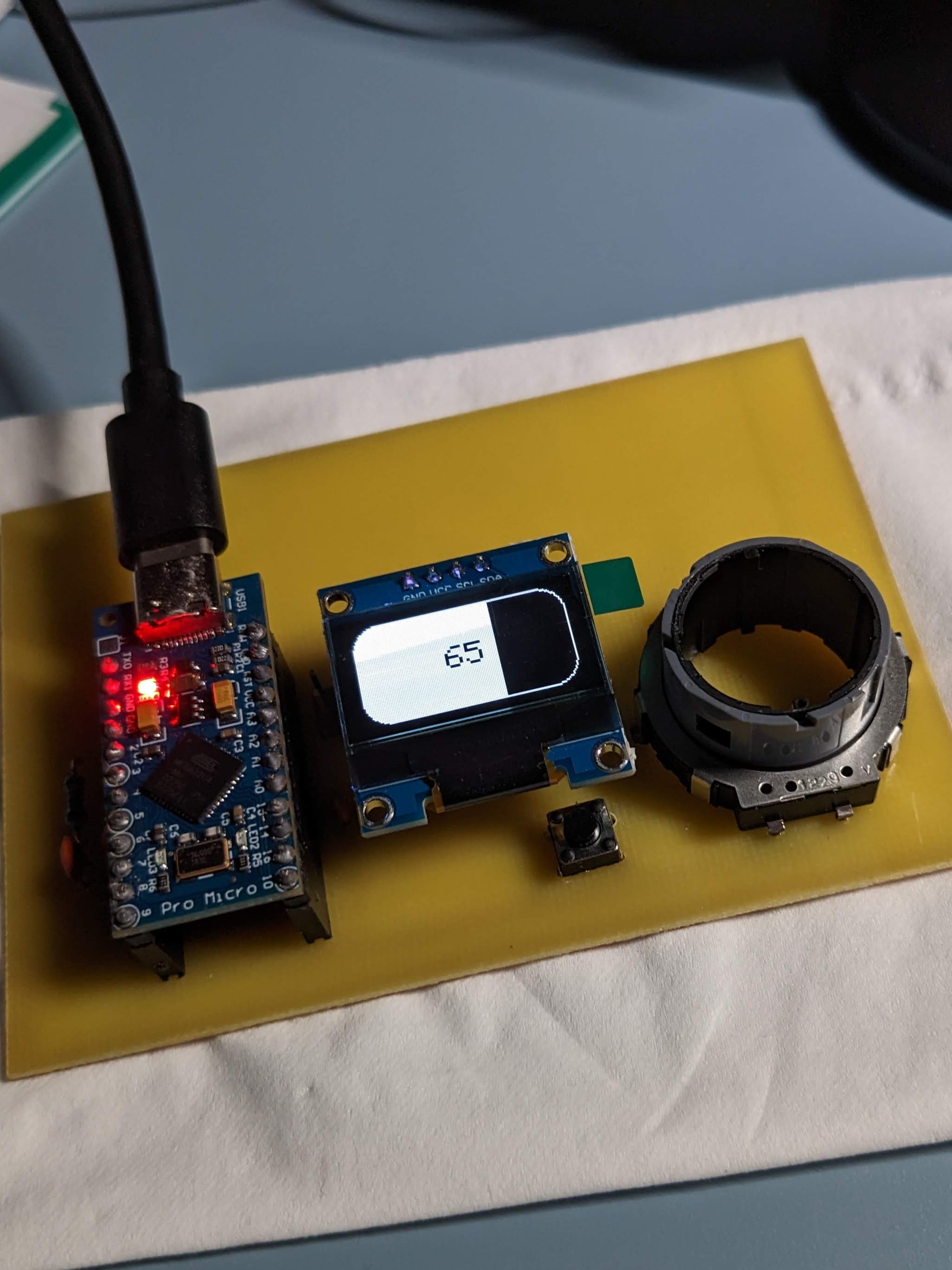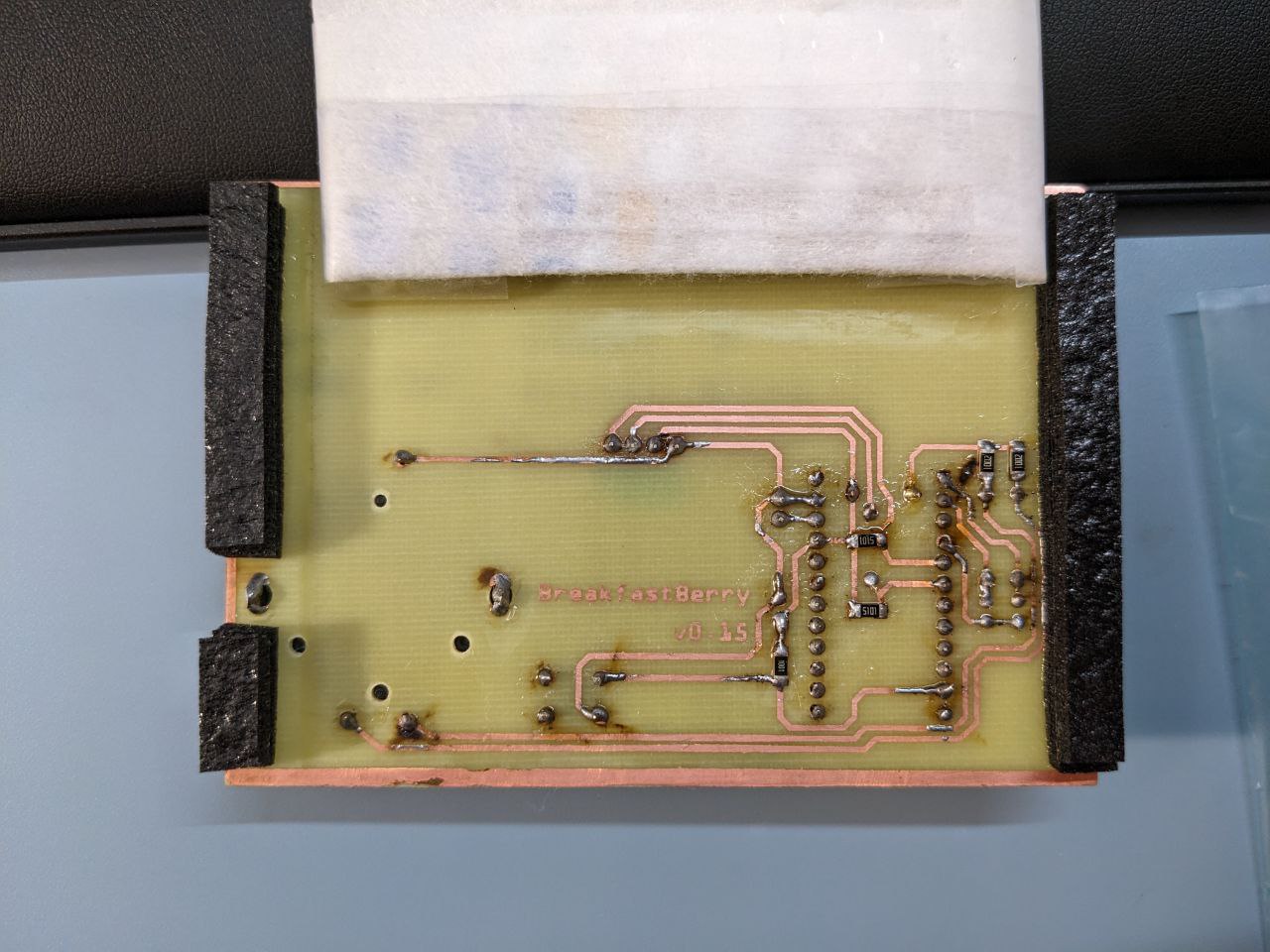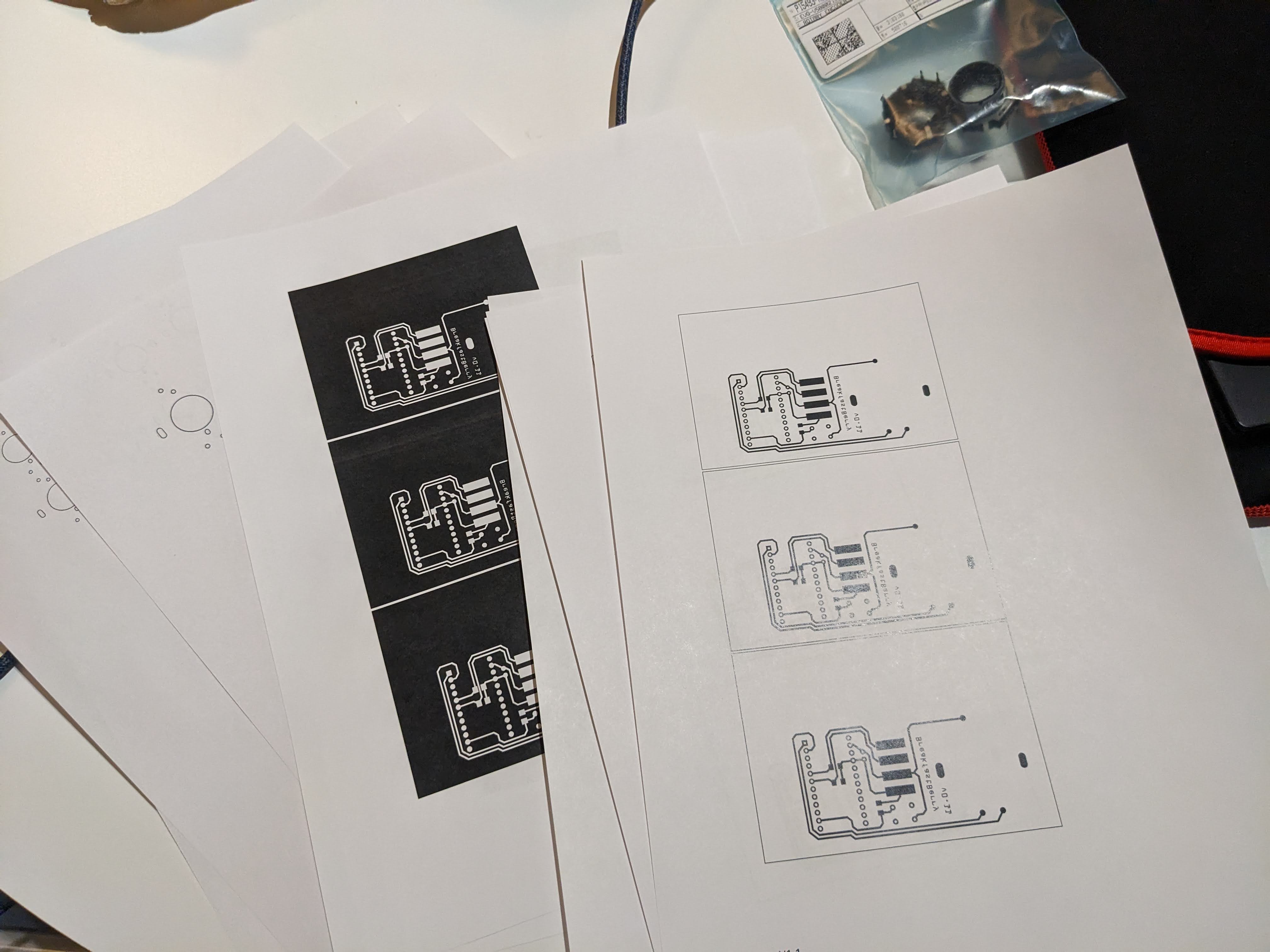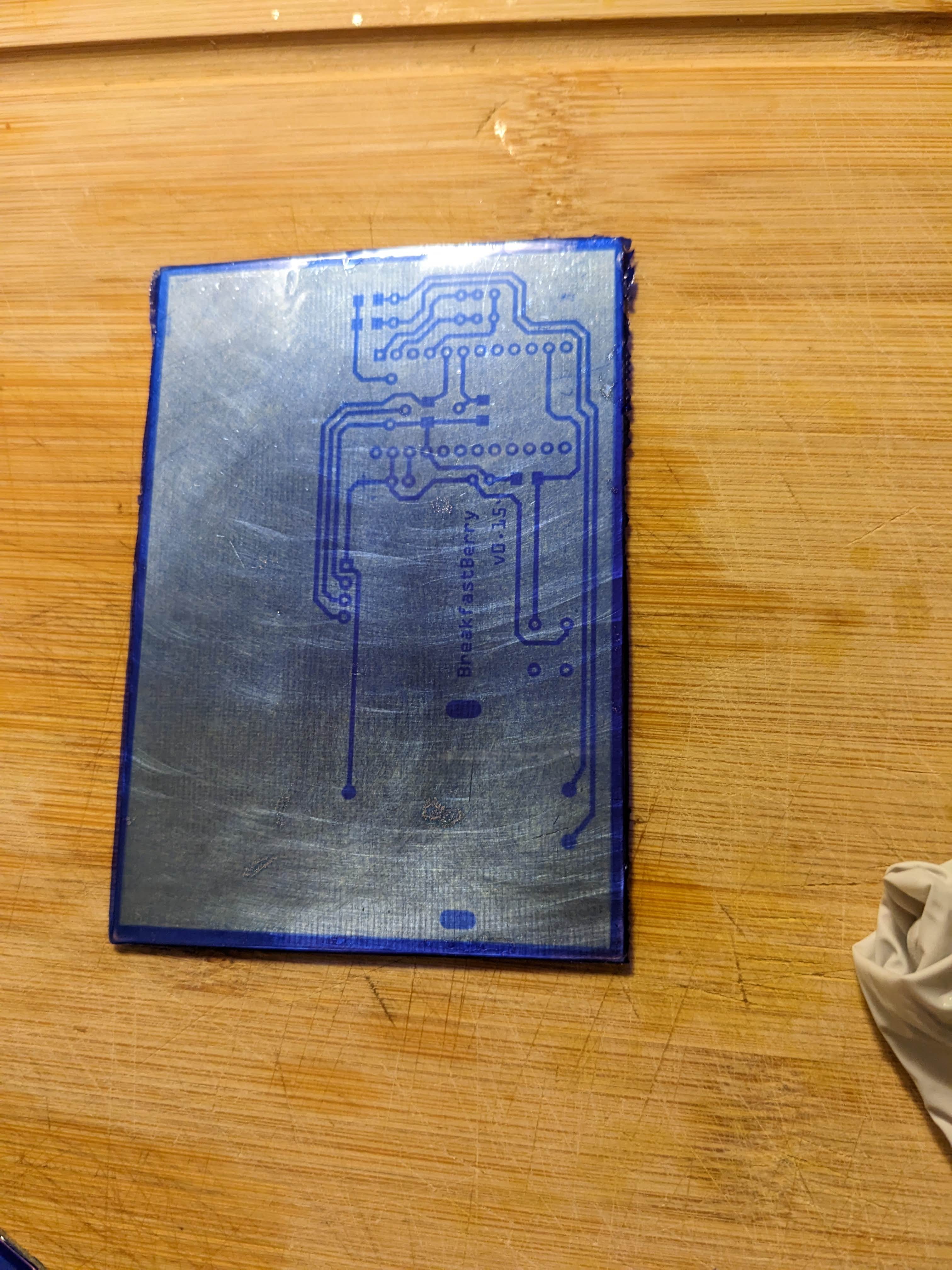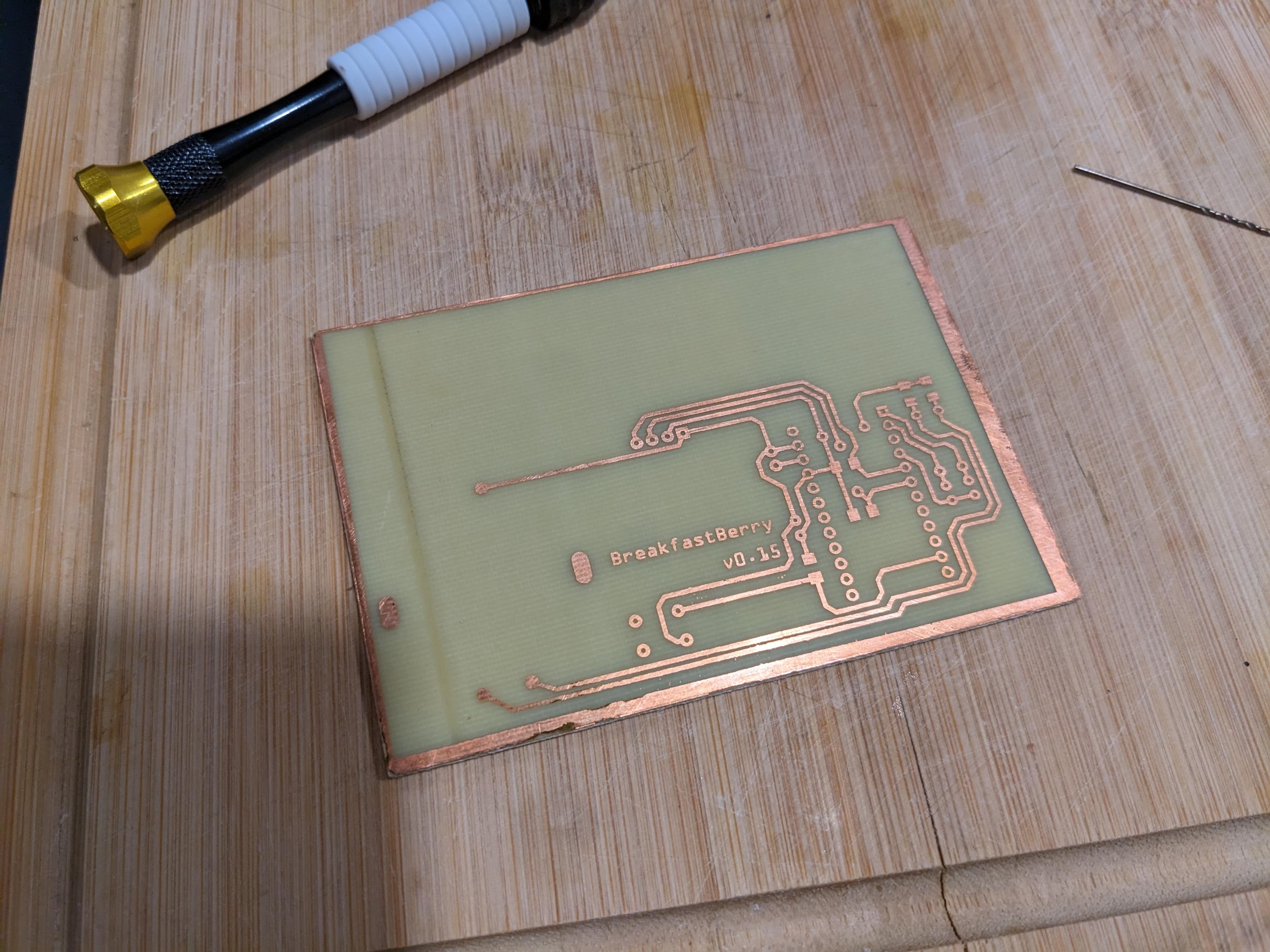There are two parts of the code, the Arduino side and the PC side.
#include <SPI.h>
#include <Wire.h>
#include <Adafruit_GFX.h>
#include <Adafruit_SSD1306.h>
#include <Encoder.h>
#include <HID-Project.h>
#include <HID-Settings.h>
#include <ArduinoJson.h>
#define SCREEN_WIDTH 128 // OLED display width, in pixels
#define SCREEN_HEIGHT 64 // OLED display height, in pixels
// Declaration for an SSD1306 display connected to I2C (SDA, SCL pins)
#define OLED_RESET -1 // Reset pin # (or -1 if sharing Arduino reset pin)
Adafruit_SSD1306 display(SCREEN_WIDTH, SCREEN_HEIGHT, &Wire, OLED_RESET);
#define SW_PIN 8 // Encoder Switch pin to 8
// Half of the total level the knob can adjust (-50 to +50)
#define KNOB_LEVEL_HALF 50
#define ENC_RATIO 1
#define CHAR_W 6
#define CHAR_H 8
#define MAIN_TAB_W 92
#define SIDE_TAB_W 32
#define ROUND_CORNER_R 16
#define MEDIA_TIMEOUT 3000
// 'volume_off_black_48dp', 24x24px
const unsigned char epd_bitmap_volume_off_black_48dp [] PROGMEM = {
0x00, 0x00, 0x00, 0x00, 0x00, 0x00, 0x00, 0x00, 0x00, 0x08, 0x00, 0x00, 0x1c, 0x03, 0x80, 0x0e,
0x01, 0xc0, 0x07, 0x10, 0xe0, 0x03, 0x80, 0x70, 0x01, 0xc2, 0x30, 0x1f, 0xe3, 0x38, 0x1f, 0xf1,
0x18, 0x1f, 0xf8, 0x18, 0x1f, 0xfc, 0x18, 0x1f, 0xfe, 0x18, 0x1f, 0xf7, 0x18, 0x00, 0xf3, 0x80,
0x00, 0x71, 0xc0, 0x00, 0x30, 0xe0, 0x00, 0x01, 0xf0, 0x00, 0x03, 0xb8, 0x00, 0x00, 0x10, 0x00,
0x00, 0x00, 0x00, 0x00, 0x00, 0x00, 0x00, 0x00
};
// 'play_pause_flaticon', 24x24px
const unsigned char epd_bitmap_play_pause_flaticon [] PROGMEM = {
0x00, 0x00, 0x00, 0x30, 0x00, 0x08, 0x38, 0x00, 0x18, 0x3c, 0x00, 0x30, 0x3f, 0x00, 0x60, 0x3f,
0x80, 0xc0, 0x3f, 0xe0, 0x80, 0x3f, 0xc1, 0x80, 0x3f, 0x83, 0x00, 0x3f, 0x06, 0x00, 0x3c, 0x0c,
0x00, 0x38, 0x18, 0x00, 0x20, 0x18, 0x00, 0x00, 0x30, 0x00, 0x00, 0x67, 0x9c, 0x00, 0xc7, 0x9c,
0x01, 0x87, 0x9c, 0x01, 0x07, 0x9c, 0x03, 0x07, 0x9c, 0x06, 0x07, 0x9c, 0x0c, 0x07, 0x9c, 0x18,
0x07, 0x9c, 0x10, 0x03, 0x9c, 0x00, 0x00, 0x00
};
// 'round_skip_next_black_48dp', 24x24px
const unsigned char epd_bitmap_round_skip_next_black_48dp [] PROGMEM = {
0x00, 0x00, 0x00, 0x00, 0x00, 0x00, 0x00, 0x00, 0x00, 0x00, 0x00, 0x00, 0x00, 0x00, 0x00, 0x00,
0x00, 0x00, 0x00, 0x00, 0xc0, 0x03, 0x00, 0xc0, 0x03, 0xc0, 0xc0, 0x03, 0xe0, 0xc0, 0x03, 0xf0,
0xc0, 0x03, 0xfc, 0xc0, 0x03, 0xfc, 0xc0, 0x03, 0xf0, 0xc0, 0x03, 0xe0, 0xc0, 0x03, 0xc0, 0xc0,
0x03, 0x00, 0xc0, 0x00, 0x00, 0xc0, 0x00, 0x00, 0x00, 0x00, 0x00, 0x00, 0x00, 0x00, 0x00, 0x00,
0x00, 0x00, 0x00, 0x00, 0x00, 0x00, 0x00, 0x00
};
// 'round_skip_previous_black_48dp', 24x24px
const unsigned char epd_bitmap_round_skip_previous_black_48dp [] PROGMEM = {
0x00, 0x00, 0x00, 0x00, 0x00, 0x00, 0x00, 0x00, 0x00, 0x00, 0x00, 0x00, 0x00, 0x00, 0x00, 0x00,
0x00, 0x00, 0x03, 0x00, 0x00, 0x03, 0x00, 0xc0, 0x03, 0x03, 0xc0, 0x03, 0x07, 0xc0, 0x03, 0x0f,
0xc0, 0x03, 0x3f, 0xc0, 0x03, 0x3f, 0xc0, 0x03, 0x0f, 0xc0, 0x03, 0x07, 0xc0, 0x03, 0x03, 0xc0,
0x03, 0x00, 0xc0, 0x03, 0x00, 0x00, 0x00, 0x00, 0x00, 0x00, 0x00, 0x00, 0x00, 0x00, 0x00, 0x00,
0x00, 0x00, 0x00, 0x00, 0x00, 0x00, 0x00, 0x00
};
// 'volume_up_black_48dp', 24x24px
const unsigned char epd_bitmap_volume_up_black_48dp [] PROGMEM = {
0x00, 0x00, 0x00, 0x00, 0x00, 0x00, 0x00, 0x00, 0x00, 0x00, 0x00, 0x00, 0x00, 0x03, 0x80, 0x00,
0x01, 0xc0, 0x00, 0x70, 0xe0, 0x00, 0xf0, 0x70, 0x01, 0xf2, 0x30, 0x1f, 0xf3, 0x38, 0x1f, 0xf3,
0x18, 0x1f, 0xf3, 0x18, 0x1f, 0xf3, 0x18, 0x1f, 0xf3, 0x18, 0x1f, 0xf3, 0x38, 0x00, 0xf2, 0x30,
0x00, 0x70, 0x70, 0x00, 0x30, 0xe0, 0x00, 0x01, 0xc0, 0x00, 0x03, 0x80, 0x00, 0x00, 0x00, 0x00,
0x00, 0x00, 0x00, 0x00, 0x00, 0x00, 0x00, 0x00
};
// Array of all bitmaps for convenience. (Total bytes used to store images in PROGMEM = 384)
const int epd_bitmap_allArray_LEN = 5;
const unsigned char* epd_bitmap_allArray[5] = {
epd_bitmap_volume_off_black_48dp,
epd_bitmap_play_pause_flaticon,
epd_bitmap_round_skip_next_black_48dp,
epd_bitmap_round_skip_previous_black_48dp,
epd_bitmap_volume_up_black_48dp
};
int oldPos = 0;
int currPos = -KNOB_LEVEL_HALF;
int prevVal;
int currVal;
int knobExceed = 0;
int currExceed = 0;
unsigned long firstDownTime;
bool buttonState;
bool buttonPrevState;
bool startButton;
int counter;
unsigned long showMediaTime;
int mediaResult;
bool isMute;
// Connect to pin 2 and pin 3, only two pins with interrupt ability to ensure max performance
// // For Arduino UNO
// Encoder myEnc(2, 3);
// For Arduino Pro mini
Encoder myEnc(1, 0);
// This function composes a JSON string that includes both the raw encoder value and the processed value and send it to P5.js
void updateSerial() {
Serial.print("[");
Serial.print(currVal);
Serial.print(",");
Serial.print(mediaResult);
Serial.println("]");
}
void updateENC(bool forceUpdate = false, bool noUpdate = false) {
// Read from the rotary encoder
currPos = posConv(myEnc.read());
// Curr value is from 0 to 100
currVal = 1 * (currPos + KNOB_LEVEL_HALF);
// Enter if converted position changed or Exceeding status changed
if (currPos != oldPos || currExceed != knobExceed || forceUpdate) {
oldPos = currPos;
// Set currExceed same as knobExceed
currExceed = knobExceed;
// drawMainScreen();
// display.display();
if (currVal < prevVal && !noUpdate) {
// Turn down volume
Consumer.write(MEDIA_VOLUME_DOWN);
updateSerial();
}
if (currVal > prevVal && !noUpdate) {
// Turn up volume
Consumer.write(MEDIA_VOLUME_UP);
updateSerial();
}
prevVal = currVal;
}
}
void setup() {
Serial.begin(115200);
Consumer.begin();
// Pin 8 as the switch detect pin is set to INPUT, and when it's low it is depressed
pinMode(SW_PIN, INPUT);
myEnc.write(-KNOB_LEVEL_HALF * ENC_RATIO - (int)(ENC_RATIO / 2));
if(!display.begin(SSD1306_SWITCHCAPVCC, 0x3C)) {
// Serial.println(F("SSD1306 allocation failed"));
for(;;); // Don't proceed, loop forever
}
// Clear the screen
display.clearDisplay();
display.setTextSize(2);
display.setTextColor(WHITE);
currVal = 1 * (currPos + KNOB_LEVEL_HALF);
updateENC(true);
showMediaTime = millis();
}
void loop() {
// If there are data from P5.js
if (Serial.available() > 0) {
// Read data
String rawData = Serial.readStringUntil('\n');
rawData.trim(); // remove any \r \n whitespace at the end of the String
// Serial.println(rawData.substring(0, rawData.indexOf(",")));
int pcVolume = (rawData.substring(0, rawData.indexOf(","))).toInt();
String rawMute = rawData.substring(rawData.indexOf(",") + 1);
if (rawMute != "-1") {
isMute = rawMute == "1" ? true : false;
// Write the value to the encoder by reverting it
// Serial.print("Ismute" + isMute);
myEnc.write(((pcVolume) - KNOB_LEVEL_HALF) * ENC_RATIO);
// Force update the screen with new value
updateENC(true, true);
}
}
else {
updateENC();
}
int result = updateButton();
if (millis() - showMediaTime < MEDIA_TIMEOUT) {
// Still show media screen
if (result >= 0) {
//Button Pressed
mediaResult = result;
// Serial.println("Pressed " + String(mediaResult));
updateMediaCommand(mediaResult);
drawMultiScreen(mediaResult);
updateSerial();
showMediaTime = millis();
}
else {
drawMultiScreen(mediaResult);
}
}
else {
// Not showing media screen now
if (result >= 0) {
//Button Pressed
mediaResult = result;
// Serial.println("Pressed " + String(mediaResult));
updateMediaCommand(mediaResult);
transitionMultiScreen(true);
updateSerial();
drawMultiScreen(mediaResult);
showMediaTime = millis();
}
else {
if (mediaResult >= 0) {
transitionMultiScreen(false);
mediaResult = -1;
}
drawMainScreen();
}
}
delay(1);
}
int posConv(long inputPos) {
// Serial.println(inputPos);
int result;
// Result is position divided by four since the knob clicks every four turns
result = (int)(round((inputPos) / (float)ENC_RATIO));
// Serial.println(result);
if (result > KNOB_LEVEL_HALF) {
// Knob value exceeds max value
result = KNOB_LEVEL_HALF;
// Set knob value to max to prevent further increase
myEnc.write(KNOB_LEVEL_HALF * ENC_RATIO + (int)(ENC_RATIO / 2));
knobExceed = 1;
}
else if (result < -KNOB_LEVEL_HALF) {
// Knob value exceeds min value
result = -KNOB_LEVEL_HALF;
// Set knob value to min to prevent further decrease
myEnc.write(-KNOB_LEVEL_HALF * ENC_RATIO - (int)(ENC_RATIO / 2));
knobExceed = -1;
}
else {
knobExceed = 0;
}
return result;
}
int drawPartialRoundRect(int _x, int _y, int _w, int _h, int _r, bool isInvert, float percent) {
int boundX = round(_x + percent * _w);
display.fillRoundRect(_x, _y, _w, _h, _r, isInvert ? BLACK : WHITE);
display.fillRect(boundX, _y, round((1 - percent) * _w), _h, isInvert ? WHITE : BLACK);
display.drawRoundRect(_x, _y, _w, _h, _r, isInvert ? BLACK : WHITE);
return boundX;
}
void drawVolumeRect(int _w, int _h) {
// How many numbers to display "0" is 0.5, "12" is 1.0
float halfCharNum = 1.0;
int textSize = 2;
int cursorX;
int boundX = drawPartialRoundRect(0, 0, _w, _h, ROUND_CORNER_R, false, (currVal / 100.0));
display.setTextSize(textSize);
if (currVal < 10) {
halfCharNum = 0.5;
}
else if (currVal < 100) {
halfCharNum = 1.0;
}
else {
halfCharNum = 1.5;
}
cursorX = round((_w / 2) - halfCharNum * CHAR_W * textSize);
display.setCursor(cursorX, round((_h / 2) - CHAR_H));
display.setTextColor(WHITE, BLACK);
// If text merges with the white part, turn it into black text on white background
if (cursorX < boundX - 1) {
display.setTextColor(BLACK, WHITE);
}
display.print(currVal);
display.setTextColor(WHITE);
}
void drawPlayTab(int status) {
int fullStatus = status;
if (status == 0 && isMute) {
fullStatus = 4;
}
int iconSize = 24;
display.fillRoundRect(96, 0, 32, SCREEN_HEIGHT, ROUND_CORNER_R, WHITE);
display.drawBitmap(round(96 + (32 - iconSize) / 2), round((SCREEN_HEIGHT - iconSize) / 2), epd_bitmap_allArray[fullStatus], iconSize, iconSize, BLACK);
}
void drawMainScreen() {
drawVolumeRect(SCREEN_WIDTH, SCREEN_HEIGHT);
display.display();
}
void drawMultiScreen(int status) {
drawVolumeRect(MAIN_TAB_W, SCREEN_HEIGHT);
drawPlayTab(status);
display.display();
}
void transitionMultiScreen(bool direction) {
// Clear buffer
display.clearDisplay();
// Play 20 frames of the animation
int iteration = 20;
int mainW;
int mainH = SCREEN_HEIGHT;
int mediaW;
int mediaH = SCREEN_HEIGHT;
// Draw a enlarging rounded rectangle here
for (int i = 0; i < iteration; i++) {
// Allow user to scroll while animation is playing
updateENC();
display.clearDisplay();
// Calculate W, H, and radius of the rectangle
if (direction) {
mainW = round(easeInOutSine(i, 0, 20, SCREEN_WIDTH, MAIN_TAB_W));
mediaW = round(easeInOutSine(i, 0, 20, 0, SIDE_TAB_W));
}
else {
mainW = round(easeInOutSine(i, 0, 20, MAIN_TAB_W, SCREEN_WIDTH));
mediaW = round(easeInOutSine(i, 0, 20, SIDE_TAB_W, 0));
}
// Draw the rectangle
drawVolumeRect(mainW, mainH);
display.fillRoundRect(SCREEN_WIDTH - mediaW, 0, mediaW, mediaH, ROUND_CORNER_R, WHITE);
delay(5);
display.display();
delay(10);
}
}
void updateMediaCommand(int mediaStatus) {
if (mediaStatus == 0) {
// Mute
Consumer.write(MEDIA_VOLUME_MUTE);
}
else if (mediaStatus == 1) {
Consumer.write(MEDIA_PLAY_PAUSE);
}
else if (mediaStatus == 2) {
Consumer.write(MEDIA_NEXT);
}
else if (mediaStatus == 3) {
Consumer.write(MEDIA_PREVIOUS);
}
}
//Reads and returns how many clicks are there for the button
int updateButton() {
if (millis() - firstDownTime > 500 && startButton) {
// Serial.println("Pressed " + String(counter));
int result = counter;
counter = 0;
startButton = false;
// Constrain the clicks from none to 3
return constrain(result, -1, 3);
}
buttonState = digitalRead(SW_PIN);
if (buttonState != buttonPrevState) {
delay(10);
if(digitalRead(SW_PIN) == buttonState) {
if(buttonState == LOW) {
// Shifted LOW
startButton = true;
firstDownTime = millis();
}
else {
// Shifted HIGH
if (startButton) {
counter++;
}
}
}
}
buttonPrevState = buttonState;
return -1;
}
// This function is similar to the built-in map() function, but with a eased curve at the start and the end of the range.
// Similar to the ease-in-out function in CSS
float easeInOutSine(int _x, int inputLow, int inputHigh, int lowerBound, int higherBound) {
int inputRange = inputHigh - inputLow - 1;
float convX = ((float)_x - (float)inputLow) / (float)inputRange;
// Serial.print(String(convX) + "; ");
int range = higherBound - lowerBound;
float result = (-(cos(PI * convX) - 1.0) / 2.0) * range + lowerBound;
// Serial.println(result);
return result;
}
The Python code is simple, I utilized the PYCAW package to read the volume and mute status of a Windows machine.
Pyserial is also used to communicate with the arduino through serial port. The code reads volume and mute information from PC and also reads arduino's stored volume and mute status.
It then determines if arduino's volume and mute status need update, if it needs, the code sends the updated status through serial.
As mentioned before, the project can work without the Python script. But without the ability to sync volume with the PC, it cannot show the correct volume and control the PC's volume when Arduino reaches the limit.
For example, if the PC's volume is at 35, but Arduino shows 0, then Arduino cannot make the PC's volume lower since on the Arduino's side, the volume is already 0, the lowest one.
To make the code more convenient to use, I wrapped my code into a .exe file using auto-py-to-exe.
